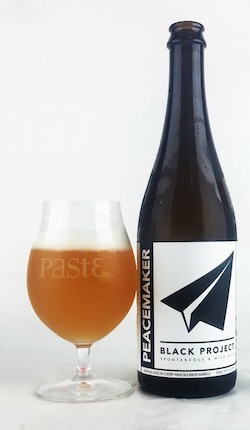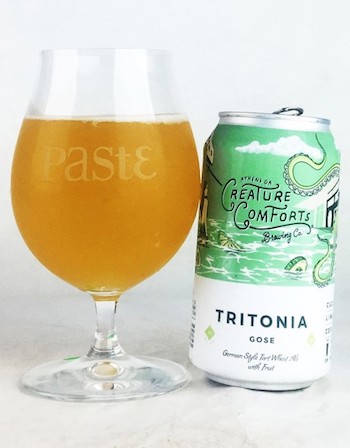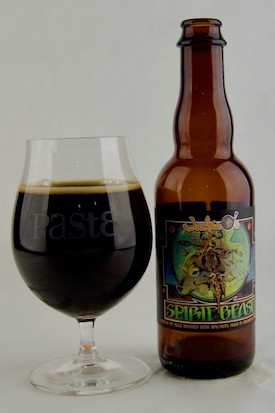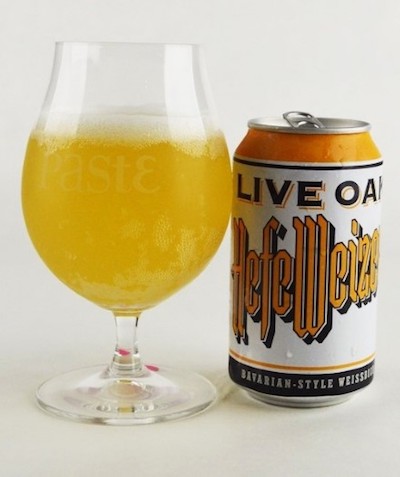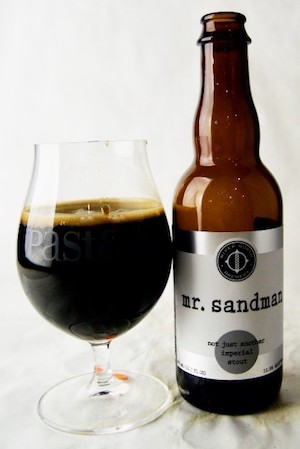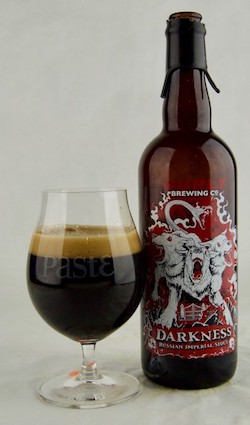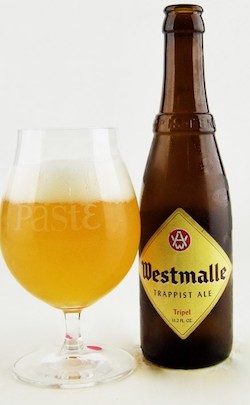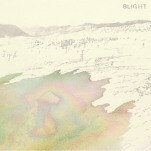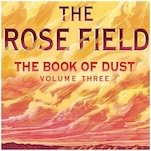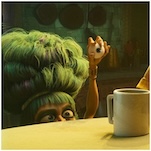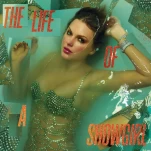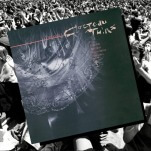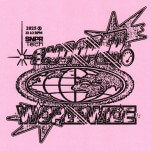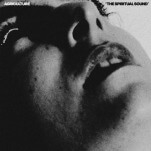14 Best Beers of 2017 (Updated)
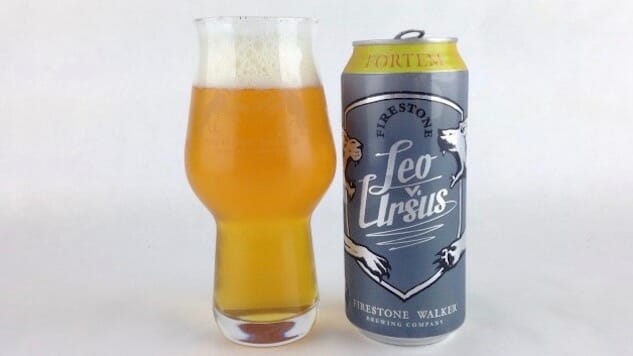
We get to drink a lot of beer at Paste. It’s one of the perks of the job, but it’s also a lot of work. Every month, Paste headquarters hosts a massive blind beer tasting where we judge and rank dozens of some of the best beers in a given style to try to figure out which beer is the best. On top of that, we have countless single reviews to write, not to mention the smaller lists we put together outside of the big blind tastings. Add it all up, and it’s a lot of freaking beer. So much beer that we’re not even half way through the year and we’re feeling nostalgic about the best beers we’ve had since New Year’s. So, we’ve compiled a short list of the best beers we’ve had this year—the blind tasting winners and the beers that scored incredibly high reviews. We’ll update this list as we move through the year, but for now, we’ll start with the best 10 beers we’ve had in 2017.
These aren’t ranked in any particular order (because how can you compare a barrel-aged imperial stout with a hefeweizen?). Instead, we’ve listed them in alphabetical order.
Black Project Peacemaker
City: Denver, CO
Style: Sour/Wild Ale
ABV: 5.5%
143. That’s how many bottles made it into our wild/sour beer tasting this summer. Is 143 wild/sour beers too many wild/sour beers? If you drink them all at once, sure, but if you space it out over days, and if at the end of those days you come to the agreement that this beer, a sour from an up and coming young brewery, is the very best of the lot, then no, it’s not too many wild/sour beers. It’s just the right amount. Black Project, out of Denver, specializes in “heady and spontaneously fermented wild ales,” and Peacemaker managed to stand out in the tasting, even with such stacked competition. It’s a blend of two beers, “both fermented from coolship-caught microbes,” before being aged in bourbon barrels that then were used to mature Colorado cherry wine.
The result is the best of both worlds—a softened bourbon whiskey character with traces of the original caramel, vanilla and deeply toasted oaky notes, but with the addition of bright cherry and strawberry fruitiness. There’s elements of funk, which contribute some light barnyard characteristics and perhaps a touch of light peach fruitiness, but that’s the running theme of this beer—many, seemingly disparate elements that are all working together, with none coming to dominate the others. This is not some treacly, sweet, artificially fruity attempt at an American wild ale. It’s a sophisticated, complex beer that uses both complementary and contrasting notes to build layers of flavor. And it’s our #1 American sour/wild ale.
Burial Separation of Light and Darkness
City: Asheville, NC
Style: Saison
ABV: 5.5%
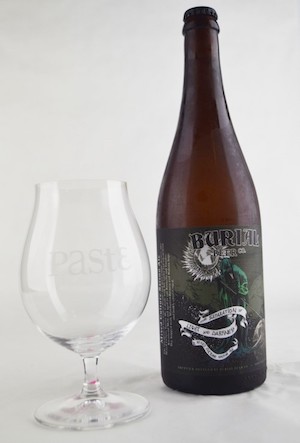
We’ve known for a while now that eventually, Burial was going to win one of these tastings. Their batting average is almost always in the top tier; they’ve just been waiting for exactly the right category to spring something like this on us. There were 116 beers in our blind tasting of the best saisons this past summer, and even though Burial is known as a bit of an IPA factory, they’re just as prolific in the saison category. Separation of Light and Darkness is a showpiece for both their brettanomyces and lactobacillus mixed culture as well as their skill with using hops as a finishing touch. Moderately tart, it’s quickly clear that this is a brett beer as well, as it puts forth a telltale funk that is earthy and almost slightly leathery. But up front, it’s all about the citrus. Says one score sheet: “Amazing citrus aroma, and perfect acidity.” From another: “Funky, tart, citrus, peppery, wow.” From one more: “Just a clean, bright, hoppy, perfect saison.”
Council Beatitude Boysenberry Barrel Aged Imperial Tart Saison
City: San Diego, CA
Style: Sour fruited ale
ABV: 9.7%
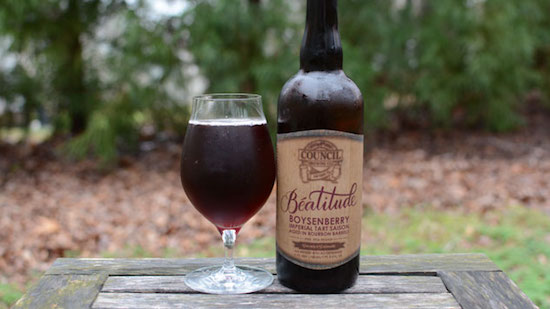
Damn, that’s a lot of words. The Beatitude Boysenberry came across our path at the beginning of the year, as the latest in the brewery’s Beatitude Tart Saison series, which is over a dozen strong with a cornucopia of fruit and dry-hopped variants. The Boysenberry follows through with its robust name, delivering huge notes of the promised berry on the nose and sip. Those jammy flavors help cut through the sourness of this beer, which is plenty damn sour. Particularly on your first couple of sips. It’s bracing. But you also get vanilla and oak from the barrel, and that jam kicks in hard providing a sweetness and balance. In the end, our reviewer called it a “glass of tart berry jam” that was absolutely stunning.
Creature Comforts Tritonia
City: Athens, GA
Style: Gose
ABV: 4.5%
Remember when gose was the strange new kid on the block? Now it seems like everyone who’s anyone is brewing a gose. We tasted 64 of the best of them and ended up crowning this beauty from Creature Comforts, which our tasters decided was “the ultimate summer refresher.” It takes cucumber and makes it the star of the show, with a clean, incredibly refreshing cucumber note that shines through the beer from start to finish. At the same time, though, it never loses track of the other “gose” elements: There’s some pronounced coriander and a big twist of lemon-lime citrus, which provides just enough residual sweetness. Tartness is right in the middle—firm enough to be refreshing without getting excessive. For all intents and purposes it’s pretty much a classic gose until the cucumber element comes in and takes the beer to the next level.
Firestone Walker Fortem
City: Paso Robles, CA
Style: American DIPA
ABV: 8.2%
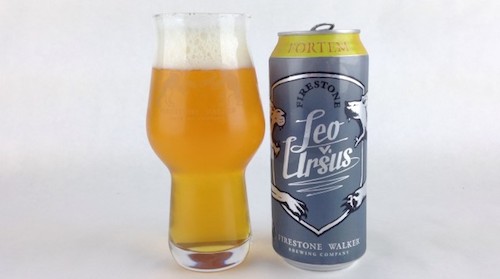
At this point in the state of craft beer, another new double IPA isn’t that big of a deal. New DIPAs hit the shelves seemingly every day. One just dropped in the time it took you to read that sentence. Wait. There’s another one. But when Firestone Walker introduces a new DIPA, shortly after discontinuing their beloved Double Jack IPA, we pay attention. Fortem is the first beer in a new series dubbed “Leo v. Ursus,” and it will only be on the market for a few months at best. So, when they sent us Fortem, the first in a new Leo v. Ursus series of beers. It blends old and new hops from the Pacific Northwest and Germany with pale malt, wheat malt and flaked oats. The result is a creamy body that helps emphasize the aromatics, which are “big on citrus, with lots of lemon, grapefruit and orange,” according to our reviewer. The taste is maltier than you’d expect from the nose, approachably bitter with plenty of citrus fruit goodness without falling into the “sweet” IPA category. It’s also much easier to drink than its predecessor, Double Jack. Our writer went so far as to call it a “beach party DIPA.” That’s my kind of beach party.
Fremont Brewing Co BBA Dark Star
City: Seattle, WA
ABV: 14.5%
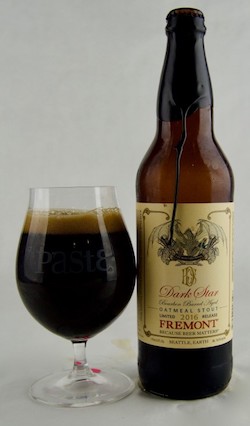
Our tasters almost died during the showdown of Best Barrel-Aged Imperial Stouts, because there were 144 of them. That’s a lot of big, boozy beers. And the barrel-aged imperial stout, as a style, includes some of the most coveted beers in the country. Think Goose Island Bourbon County Stout. Think Founders Kentucky Breakfast Stout. The competition was fierce, but in the end, Fremont Brewing’s Bourbon-Barrel Aged Dark Star (with an ABV of 14.5%!) rose to the top thanks, largely, to its perfect execution of the style. Fremont didn’t mess around with adjuncts (no cacao nibs or vanilla beans? Really?); instead they blended three different batches to create a rich, barrel-heavy beer that’s full of molasses and maple syrup. The beer earned Fremont Brewing the title of “barrel-aged stout masters.”
-

-

-

-

-

-

-

-

-

-

-

-

-

-

-

-

-

-

-

-

-

-

-

-

-

-

-

-

-

-

-

-

-

-

-

-

-

-

-

-

